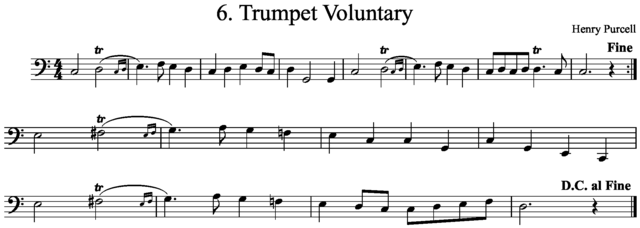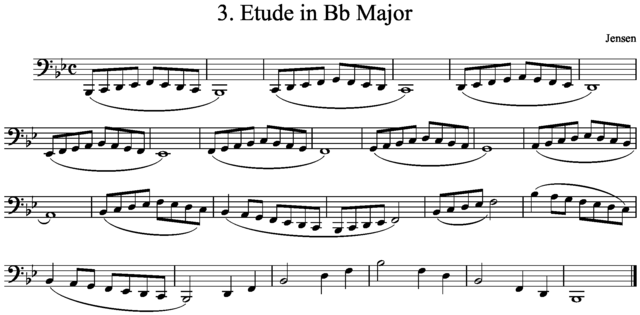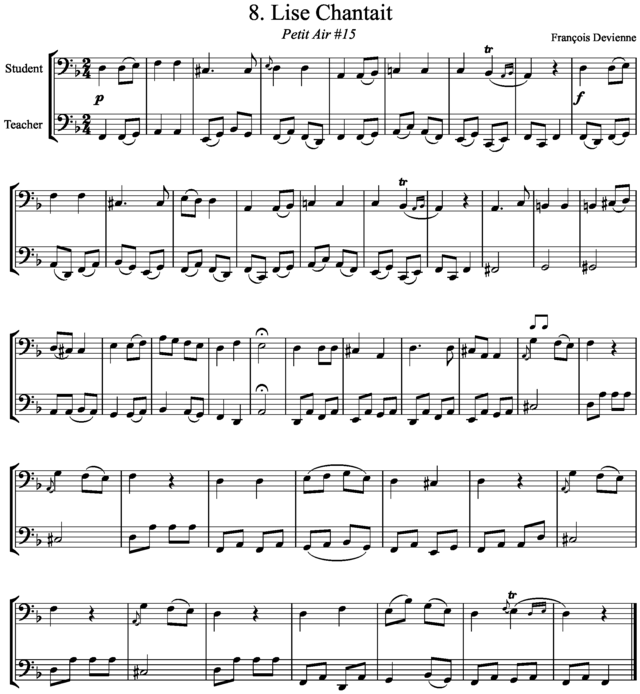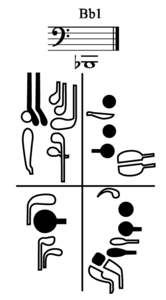
A trill is a musical ornament (as is the grace note) consisting of a fast oscillation between two adjacent notes. Trills are indicated by “tr” written above the note to be trilled. Always trill between the written note and the note in the key signature that is right above it. For instance, “tr” written over an A in the key of Bb Major (two flats) would mean to trill between A and Bb.

Trills are often ended with a nachschlag – two quick grace notes, the first being below the main note of the trill and the second being the main note.

The speed of the trill is determined somewhat by the tempo of the piece, and the context of the trill. In a slow piece, the trill will be slower than in a fast piece. A long trill will often start slowly, and gradually get faster.
Music historians often debate whether to start a trill on the main note, or the upper note. This is a complicated subject, but as a general rule, if music was written before 1800 (Mozart, Haydn, Purcell, Handel) start the trill on the upper note. If it was written after 1800, start the trill on the main note.
The exercise below is designed to help you practice trills that start on the upper note. The bottom line below shows the approximate rhythm that you should use for the trill and nachschlag. Once you get comfortable with the written rhythm, try stretching the first note, and then moving the rest of the trill faster.
Some trills on the bassoon require special fingerings, because using the full fingering would be too awkward to play quickly. All of the trills below use the full fingering. Consult a trill chart online whenever you encounter a difficult trill.
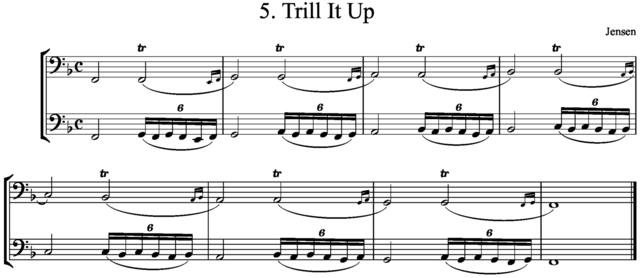
Since Purcell composed in the 17th Century, start the trills from the upper note. On the F# trill in the second strain, either leave the Eb resonance key (L.H. pinkie) down throughout the trill, or leave it off throughout. Try both ways and determine which way produces the best tone and intonation on both pitches.
